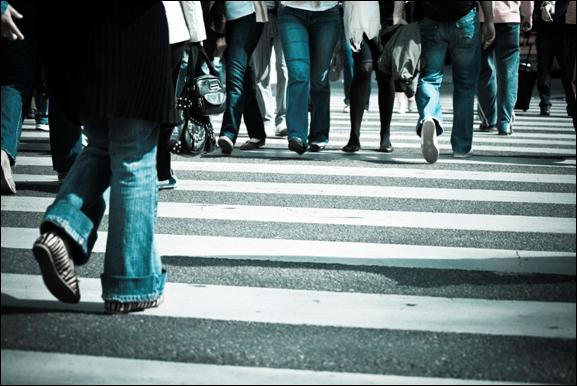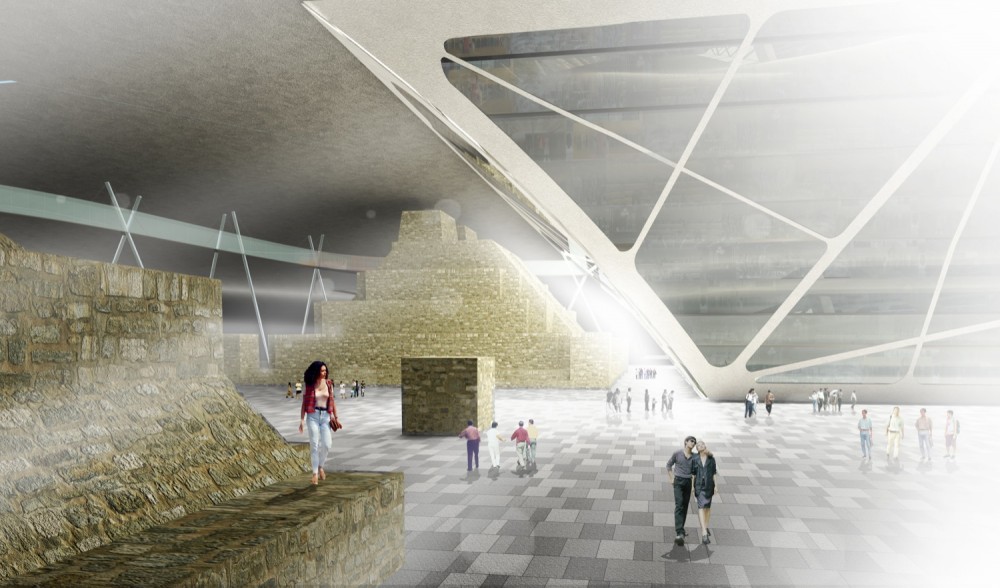It’s called piezo technology and it enables scientists to tap energy from many sources: roads, railways – and dancefloors.

Endless amounts have been written about what is the right path to a low-carbon future – but not much of that commentary has focused on the role that literal paths could play. Yet in the future we may all be generating energy wherever we go, whether we’re walking, driving or sitting on the train, using a technique known as energy-harvesting.
There are two main approaches. One is to use mechanical technology to capture the energy and convert it into electricity and the other is to use piezo-electric materials, which produce electricity when they are put under pressure – when someone steps on them or drives over them, for example.
One of the best-known uses of the technique was in a club in Rotterdam, which installed an energy-generating dance floor, where the dancers created their own light show. While in the UK, a company, Pavegen, has generated energy from schoolchildren running to their next lesson, from thousands of runners at this year’s Paris Marathon, revellers at the Bestival music festival on the Isle of Wight and spectators travelling to watch the London 2012 Olympic Games via West Ham tube station.
The technology is ideal for anywhere that attracts crowds, so ticket barriers at train and tube stations are an obvious application, but the concept will also work at shopping centres, sports venues, even airport terminals. And as a technique that produces more energy when more people travel across the energy-producing materials, it’s a particularly elegant solution to matching supply with demand.
From our partners:
As well as harnessing the power of pedestrians, energy harvesting also works well in roads and on rails. An Israeli company, Innowattech, has been conducting tests on embedding piezo materials into roads and railways to generate energy as vehicles pass over them, which is then stored in batteries which can be used to power roadside lights or feed into the grid.
There is even a scheme being proposed to capture the wind energy produced by speeding. Unfortunately, at the moment calibrating the materials so that they produce maximum power when cars travel over them means they don’t work when heavier vehicles pass by, so it is hard to make them work in real life. However, if car-only lanes or HGV/bus-only lanes were introduced, the potential would be huge.
Such restrictions do not apply if piezo materials are not used, however. A Sainsbury’s store in Gloucester installed a system that generates power from shoppers’ cars and delivery trucks as they enter the car park.
On the road, it is not just the action of cars on the surface that can produce energy; the technique can cut fuel use within vehicles as well. One example of this is the Kers (kinetic energy recovery system) that is used in Formula One cars to capture the energy created by braking. The concept will be extended next season, when teams will also use the heat produced by their exhaust systems to help them to complete races using a third less than their annual fuel allowance, while still going at the same speeds. The technology can be expected to make its way into commercial vehicles eventually.
And because piezo materials can generate energy from vibrations, they also have the potential to harvest energy from every motor in every factory and industrial application in the country. Some of the biggest benefits will come from energy harvesting’s role in sensors, says Fred Pimparel, technical manager for piezo-electric applications at Morgan Advanced Materials.
The materials are mainly used at the moment in fairly small-scale activities such as monitoring tyre pressures and operating cigarette lighters, while some mobile phones use piezo materials that light up the screen when the phone rings, using the energy created by the sound of the ringtone. One based company in Southampton Perpetuum has developed technology that uses the vibrations from train carriages or from industrial machinery to power sensors. These continuously monitor machinery and allow companies to identify when they need to carry out maintenance on their equipment before it breaks, saving huge amounts of time, money and business disruption.
Energy harvesting will play a key role in the smart cities of the future, says Kemball-Cook, who believes the sector could be worth £18bn by 2018. “The smart city is one where everyone communicates with each other and power is directed to where it is needed. Energy harvesting is a technology that can both produce the power and send the data that’s needed to link everyone together and use energy more efficiently.”
And if you think some of these ideas sound far out, what’s coming next could be even more outlandish. A Californian start-up company is working on a minute piezo-electric energy harvester that fits on a contact lens and collects energy from blinking and other eye movements. The aim is to use this energy to deliver information to the wearer or to administer medication.
Meanwhile, at the Lawrence Berkeley National Laboratory in California, scientists have found a way to generate power using (harmless) viruses that convert mechanical energy – the tap of a finger on a virus-covered electrode, for example – into electricity. In time, they hope that it could lead to energy being generated from the vibrations created from commonplace activities such as opening doors or climbing the stairs.
However, as Pimparel says: “The academics are still trying to understand how this technology works. We need to manage expectations about what is possible at the moment.”
This article originally appeared in The Guardian.














